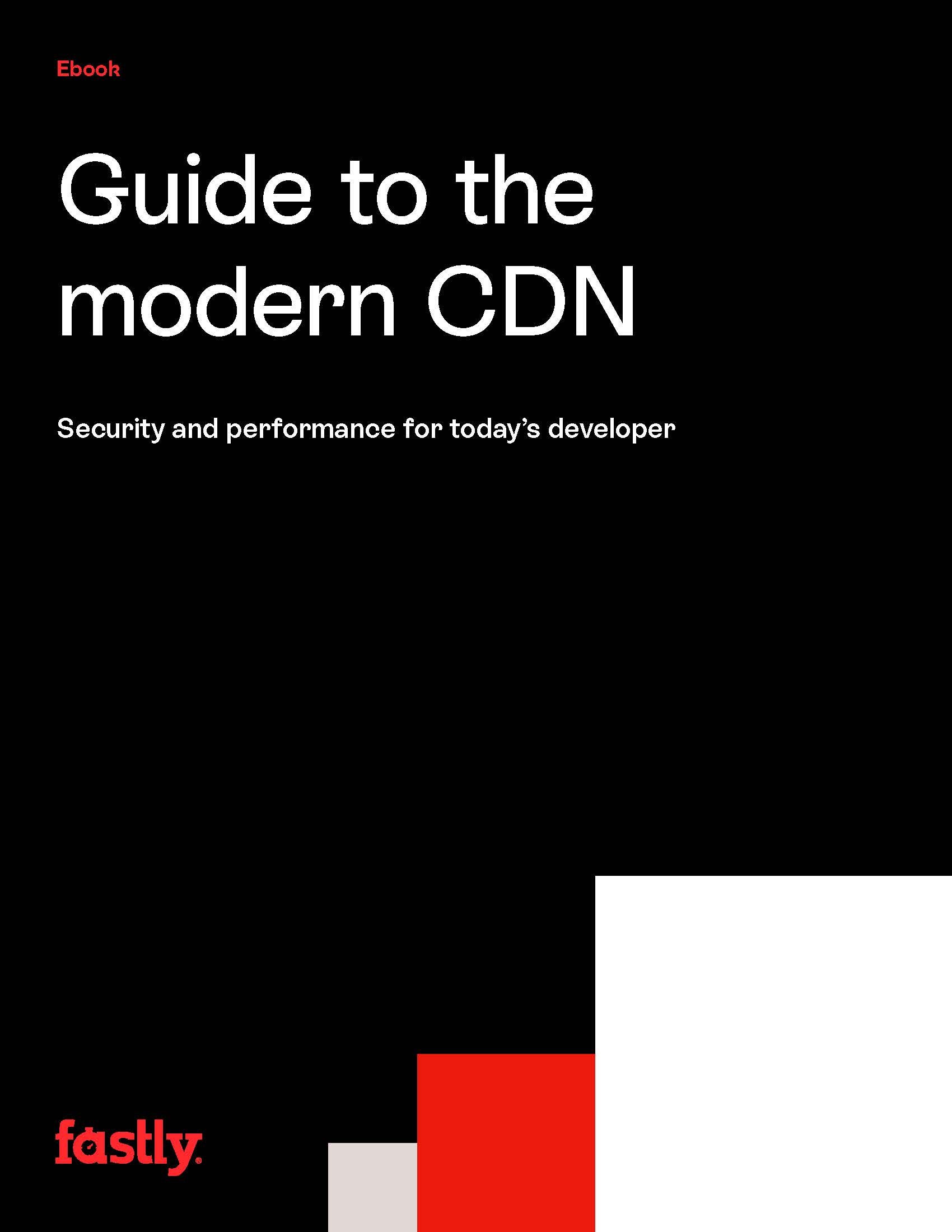Guide to the modern CDN
Security and performance for today’s developer
On this page
Introduction
Too many developers are still living with the dark ages of black-box content delivery networks (CDNs) that don’t provide the real-time observability, baked-in security, and programmatic control needed to deliver the dynamic experiences today’s users demand. In this ebook, we’ll take you through the evolution of the developer’s relationship with the CDN and how traditional CDNs failed to keep up. We’ll introduce the benefits a modern CDN can bring — from better visibility into traffic patterns to API design that powers delightful user experiences to the ability to actionably operate a secure DevOps culture. And we’ll give you inspiring, real-world examples of how the companies thriving in this era of digital transformation are doing so with powerful, programmable CDNs.
After reading the Guide to the Modern CDN, you’ll understand why it’s time to rethink your CDN strategy and what to look for in a new one.
A brief history of CDNs
The before times
Before CDNs entered the picture, companies with online presences ran and delivered content from their own data centers, either on premises or within co-location facilities.
Both of which required significant investments from the company in non-core competencies. These data centers were limited in their computing power and lacked bandwidth, and the sheer physical distance between data centers and end users posed latency problems.
The backbone of the internet was in its infancy, with far fewer internet service providers and interconnection points. A single data center in New York City might deliver content to users in San Francisco, Dublin, Shanghai, and countless other places around the world. This could mean slow load times and poor online experiences, but the solution — scaling traditional centers to meet global demands — was slow, expensive, and hard to get right. These were just a few of the many challenges that gave birth to the first generation of CDNs.
The basic idea behind this first wave of content delivery technology was simple: locate points of presence (POPs) in areas around the world, close to end users. Then cache content in servers located in these POPs, and deliver that content from the cache servers. Suddenly the multiple requests going back and forth between an end user and what used to be a data center at the origin could be intercepted by a closer POP (or proxy server), speeding up load times and delivery. The benefits extended to the company and developer as well, as companies no longer had to scale up their origin data centers.
The world changed; CDNs didn’t keep up
YouTube was founded in 2005; Facebook became a widely available platform in 2006 and Twitter launched the same year; the first iPhone was released in 2007, the same year Netflix started its live streaming services; Spotify launched in 2008. User expectations for online experiences changed — and the content itself changed too, with user-generated content rapidly growing in popularity. Developers’ expectations changed as well, as they were tasked with bringing to life the innovative, dynamic experiences customers demanded.

First-generation CDNs struggled to keep up
They responded primarily by increasing the number of their POPs around the world, but that didn’t make a big enough difference. In fact, increasing POPs can actually harm CDN performance because there is a lower likelihood of an end user’s content being stored in any single POP’s cache when there are more of them scattered around the world. This degrades the user experience and reintroduces the problems that brought about CDNs in the first place.
One of the biggest issues facing the delivery of this new type of dynamic content was that the CDNs didn’t offer real-time cache invalidation — the ability to tell a CDN on the fly to invalidate a piece of content, delete it from the server, then deliver a new piece of content in its place (especially impactful for sites with user-generated content like videos and comments). With some traditional CDNs, it could take anywhere from minutes to hours for changes to take place, which could mean out-of-date headlines, stock prices, inventory counts, account information, and more.
Delivery problems persist
Although it’s true that some problems, like cache invalidation, have come a long way, there are many challenges that still exist with traditional CDNs. For example...
Continue reading

Continue reading
Download the full ebook to learn about how the modern CDN is designed to support the modern user and the importance of selecting the most performant CDN.
Meet a more powerful global network.
Our network is all about greater efficiency. With our strategically placed points of presence (POPs), you can scale on-demand and deliver seamlessly during major events and traffic spikes. Get the peace of mind that comes with truly reliable performance — wherever users may be browsing, watching, shopping, or doing business.
497 Tbps
Edge network capacity1
150 ms
Mean purge time with Instant Purge™
>1.8 trillion
Daily requests served4
~90% of customers
Run Next-Gen WAF in blocking mode3
As of December 31, 2024
As of December 31, 2022
As of March, 2023
As of July 31, 2023
Support plans
Fastly offers several support plans to meet your needs: standard, gold and enterprise.
Standard
Free of charge and available as soon as you sign up with Fastly.
Gold
Proactive alerts for high-impact events, expedited 24/7 incident response times, and a 100% uptime Service Level Agreement (SLA) guarantee.
Enterprise
Gives you the added benefits of emergency escalation for support cases and 24/7 responses for inquiries (not just incidents).